Amid Tenerife’s bustling tourism, it’s interesting to consider that many visitors will notice the island of La Gomera, just 45 km across the Atlantic Ocean. However, only a handful seize the opportunity to embark on the 45-minute ferry journey, unlocking the door to the extraordinary natural wonders that this little island holds. Amidst the vast annual influx to Tenerife, La Gomera remains a hidden treasure waiting to be explored.
La Gomera is the second smallest of the Canary Islands. It is renowned for its spectacular nature and wildlife as well as being a magnet for hikers and walkers who come to the island to follow the many trails and routes that crisscross the island. For those looking for a more relaxing stay, the sandy black beaches entice the sun worshippers, while the main town of San Sebastian offers colourful architecture, history, local life, intimate restaurants, cafes and some local retail therapy.
In addition to its captivating landscapes, La Gomera provides an unparalleled opportunity to witness marine life in its natural habitat through numerous dolphin and whale-watching tours. The crystal-clear waters around La Gomera harbour a rich biodiversity, making these tours an incredible experience for nature enthusiasts.
Eager to explore this little-known island, and fulfilling a long-standing desire, I recently took a trip to La Gomera where the art of whistling is an age-old means of communication.
Time to find out what I discovered… both visually and audibly!
Best Time To Visit La Gomera
La Gomera boasts a subtropical year-round climate, offering consistently mild temperatures. August and September stand out as the warmest months, with temperatures ranging from the mid to high 20s.
During my visit in September, I encountered a fascinating weather phenomenon — a day could embody all four seasons. Coastal areas sweltered in the heat, yet venturing inland revealed cooler temperatures, clouds, and occasional rain.
While mist occasionally obscured the views from the very top of the island, the silver lining was the speed of the clouds. If you hang around, you’ll soon witness their passing, unveiling the breathtaking vistas of La Gomera and in the distance Tenerife.
Getting to La Gomera
Travelling from Tenerife to La Gomera is effortlessly convenient. Opting for the Fred Olsen Express Ferry, a swift 45-minute journey departs from Los Cristianos port, Tenerife, and lands directly in San Sebastian, the capital of La Gomera.
Two reputable companies, Naviera Armas and Fred Olsen Express, operate the service, offering up to seven daily ferries, thus providing flexibility for your schedule. The ferry accommodates both foot passengers, ideal for day-trippers, and vehicles, whether rented in Tenerife or on-site in La Gomera. Consider renting a car at the San Sebastian port, as taxis tend to be pricey.
Onboard amenities include a café with refreshments, pastries, and snacks, along with toilets and spacious, air-conditioned seating. While the free wifi can be frustratingly intermittent, bilingual announcements (Spanish and English) keep passengers informed. A small deck area at the rear of the ferry offers limited seating for those not concerned about their hairstyle! For foot passengers, one-way fares range from £45 to £80 per person.
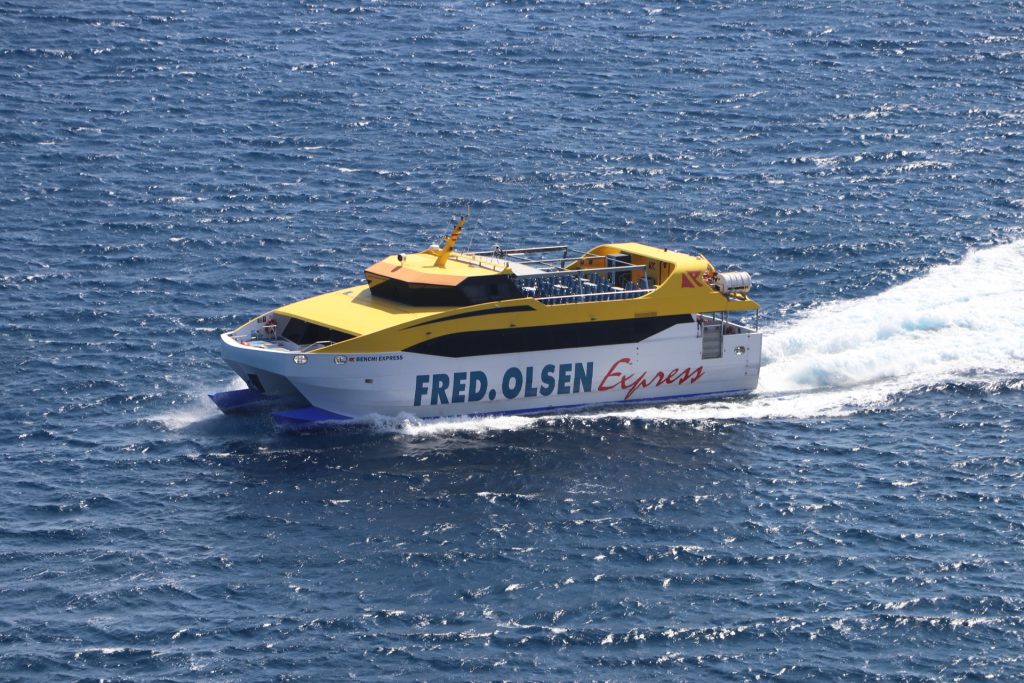

San Sebastián de La Gomera
I arrived on the East Coast at the island’s capital, San Sebastián de La Gomera, a town, like many on the island, that very much reflects the island’s Maritime history.
A brief walk of just under 400 yards lands you in the heart of Constitution Square, where I couldn’t help but smile at a group of shall we say, mature gentlemen, sitting beneath a majestic Indian Laurel Ficus Tree. They were leisurely sipping coffee, perusing newspapers, and occasionally flailing their arms whilst putting the world to rights. Fast forward 25 years and I reckon that might just be me!
From Constitution Square I wandered just a few steps into the Torre del Conde Park, where one of the most recognisable landmarks and the oldest building on the island is located – the Torre del Conde. This gothic, 15th-century, former military fortress stands alone in the heart of the park. Tours are available of the Tower as well as the park that is home to several monuments and tributes.
Not far from Torre del Conde Park in the Avenida de Colón is the small Municipal Market of San Sebastián de La Gomera. Here you can purchase local aperitifs or gastronomy products typical of the island.
San Sebastian de La Gomera is perhaps most famous for being the last stop that Christopher Columbus made before embarking on his historic journey to America. The Casa de Colón is alleged to be the house where he spent the last night before his epic trip. Here there is a collection of pottery from the South American Chimú people, which is significant as it is likely to be the type of art that he would have encountered on his arrival in the new world!
The Archaeological Museum of La Gomera is worth a visit if you are interested in the island’s unusual landscapes, while a short walk will bring you to the town’s main church, the lovely Iglesia De La Asunción.
From the church take a stroll along the pedestrianised, Calle Real. This is the main shopping area and home to a variety of traditional shops selling produce, souvenirs, clothes and jewellery. You are sure to see the busy Colon Restaurant as you approach Constitution Square. This is a great stop for lunch and a spot of people-watching… and listening!
If you are staying in San Sebastian de La Gomera then you will also be interested to know that just a stone’s throw from Constitution Square and across the road is the Playa de San Sebastián beach. This 600-metre-long stretch of Volcanic sand is popular for sun worshippers and for families and children to play a variety of sports.






Playa de Santiago
I was staying on the island’s south coast, 40 minutes from San Sebastian de La Gomera, at the wonderful 4* Hotel Jardin Tecina & Tecina Golf. It was so wonderful I have written a blog of its own to showcase this beautiful hotel!
The hotel is perched high above the village of Playa de Santiago where at the far extreme is a statue of the Pescador de Playa de Santiago, for this was once a thriving fishing village. This delightful little village is set around a black sandy bay with a little harbour full of fishing boats, excursion vessels offering kayaking, snorkelling, diving trips and a jetty to receive some of the smaller ferries from further afield.
The village itself, like San Sebastian, has a large open square where locals sit under another of those giant mushroom-shaped Ficus Trees and children kick a football around. Off the main square, there are several pretty little streets with pastel-coloured houses and a couple of souvenir shops, and cafes.
There were three places here that grabbed my attention for authenticity and charm.
The Art Studio is a rustic building and home to a range of antiques, jewellery, modern creative art and paintings. It was well worth a look around and to my enjoyment, it was also home to Mila the Cat who was asleep in the greeting card section and Nana The Dog who was on the sofa.
Next to the Art Studio is the Bar El Tarajal, an old beach bar, ideal for a sundowner overlooking the sea or sitting in their little courtyard garden. It’s not luxury but it’s real, and it’s local, and it’s what I love about these types of finds in little villages in faraway places…. it just had character!
After a drink head to the incredible La Cuevita Restaurant, which is well worth a visit for its traditional Canarian Cuisine and unique setting. Located next to the harbour and carved into the base of the black volcanic cliffs this establishment was founded in 1984 and just oozes charm and history. It was here that the fisherman used to bring their catch to their waiting wives who then salted it and prepared it for sale. If you want authentic La Gomera cooking in a unique magically lit, cave setting then you need to visit, La Cuevita! Local ingredients might include Almogrote, a paste made with hard cheese, pepper, garlic and olive oil, or palm honey, made using sugarcane juice and palm tree sap.
In February or March, normally on Ash Wednesday the largest carnival takes place around Playa Santiago and Alajeró. The theme changes from year to year and involves a parade, a party in the main square and then the burning of a Sardine Shaped Figure – a religious act symbolising the farewell to the winter season while looking forward to the year ahead.

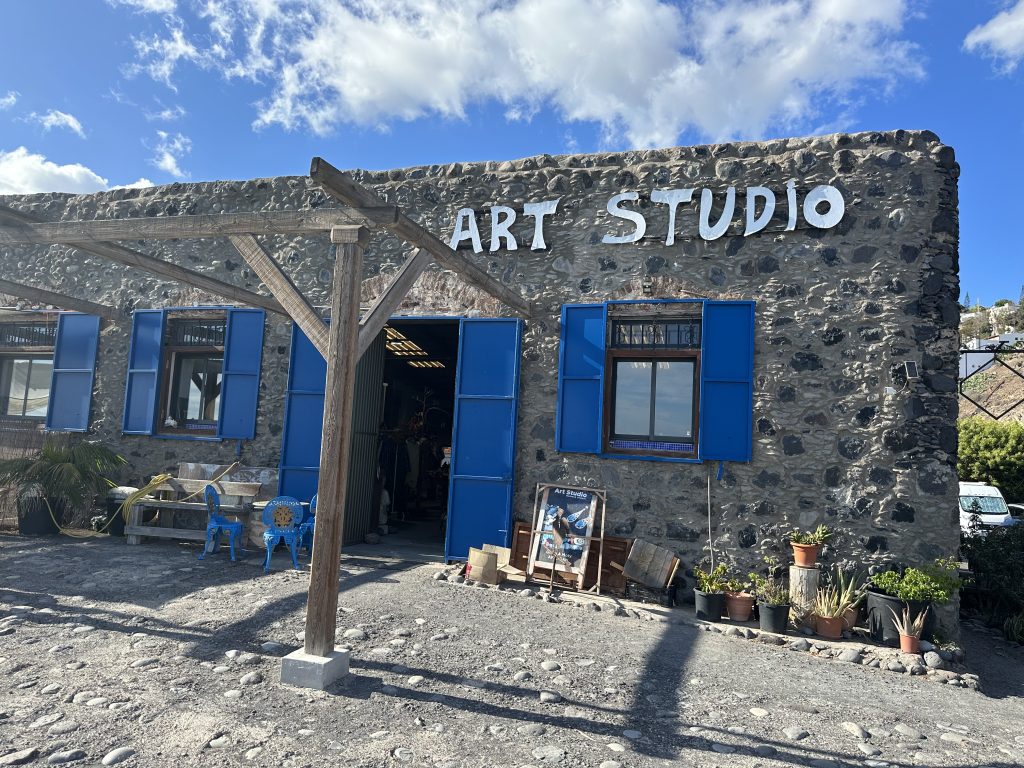
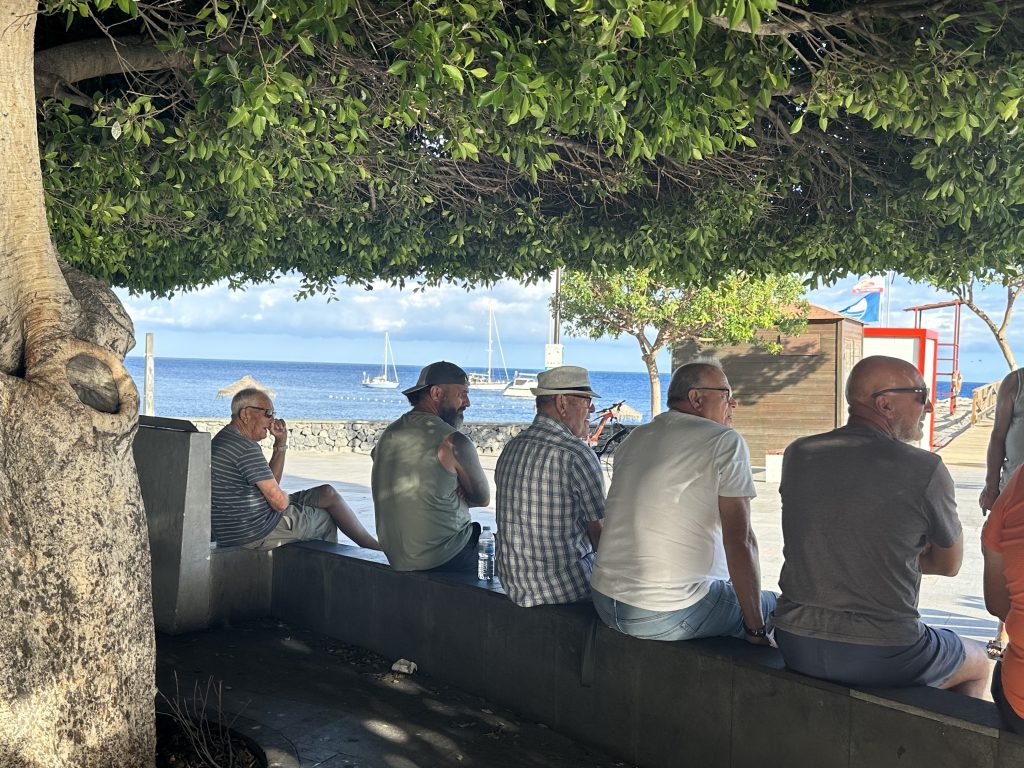

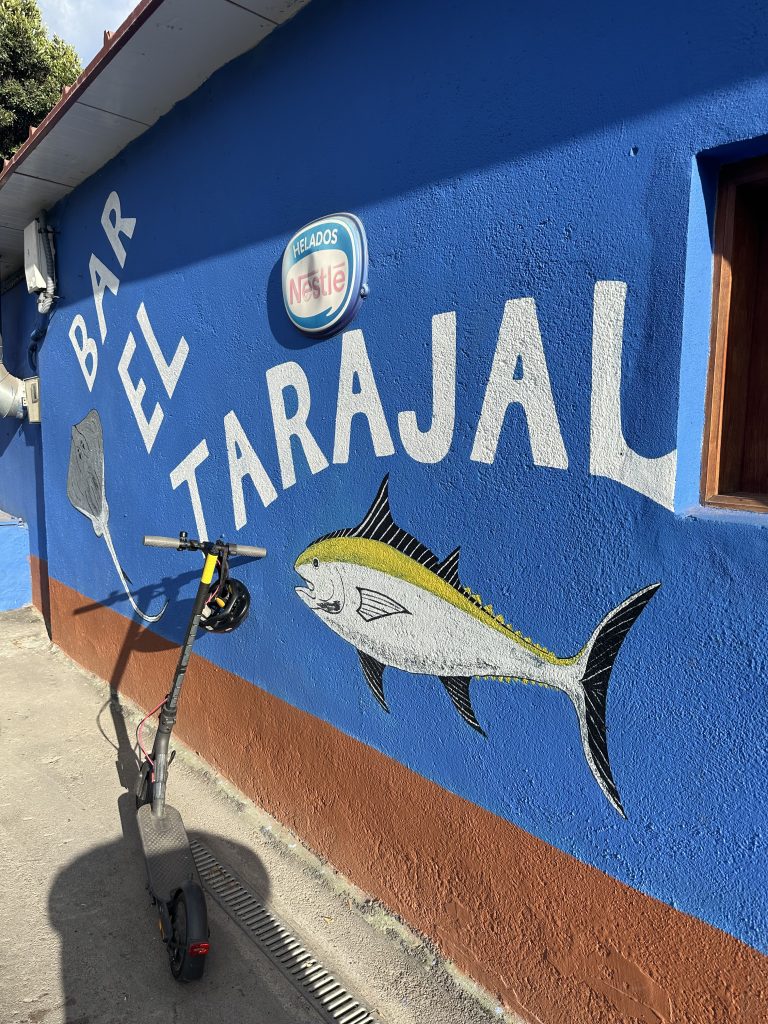

A Day Trip By Road To The South of La Gomera
Embarking on a solo adventure from the Hotel Jardin Tecina in the South, I opted for the freedom of a two-day car rental at 98 euros. I was eager to explore La Gomera at my own pace and unburdened by time constraints, so I made a plan over breakfast that morning!
Day one involved a journey from Playa Santiago to the captivating Mirador de Igualero, weaving through El Cercada, Chipude, Las Hayas, Arure, and the enchanting Valle Gran Rey on the Western coastline.
Returning, I journeyed to the island’s heart, reaching La Laguna Grande in the famed Parque Nacional de Garajonay.
It was a lot of driving but as you will discover it was worth every hairpin bend!
The Mirador de Igualero
My adventure kicked off at the breathtaking Mirador de Igualero. In La Gomera, surprises unfold around every corner, marked by captivating viewpoints known as Miradors. Don’t miss them!
Perched at an altitude of 1321m, this Mirador unveils dramatic scenery, from lush green ravines to the deep azure sea. The sole structure, Ermita de San Francisco de Asís chapel, shares space with a monument honouring Silbo Gomero, the unique whistling language of La Gomera and a UNESCO World Cultural Heritage.
This extraordinary tradition, once employed for communication across gorges and ravines, persists as a fascinating aspect of local culture. If you catch wind of distant whistles and responses, you might just find yourself the subject of conversation!



Chipude & El Cercada
Make sure to include the charming towns of Chipude and El Cercada in your itinerary; both offer tranquil streets and a serene ambience. Chipude boasts the 16th-century Iglesia Virgen de la Candelaria Church and the iconic Fortaleza de Chipude, a 1,200-meter-high mountain renowned among hikers. Engage in the local viticulture with three vineyards in La Gomera, including one in Chipude.
El Cercada, though smaller, is famed for its ceramics, so be sure to visit its quaint pottery shops. Next on the journey is Arure, where an elusive waterfall beckons eager hikers.
As the scenery transitions from lush greenery to dark volcanic rock, breathtaking views unfold, making the route from Arure to Valle Gran Rey a highlight of the island’s beauty and very much a highlight of my visit to La Gomera. This road was like a scene from a Bond movie – I loved it!




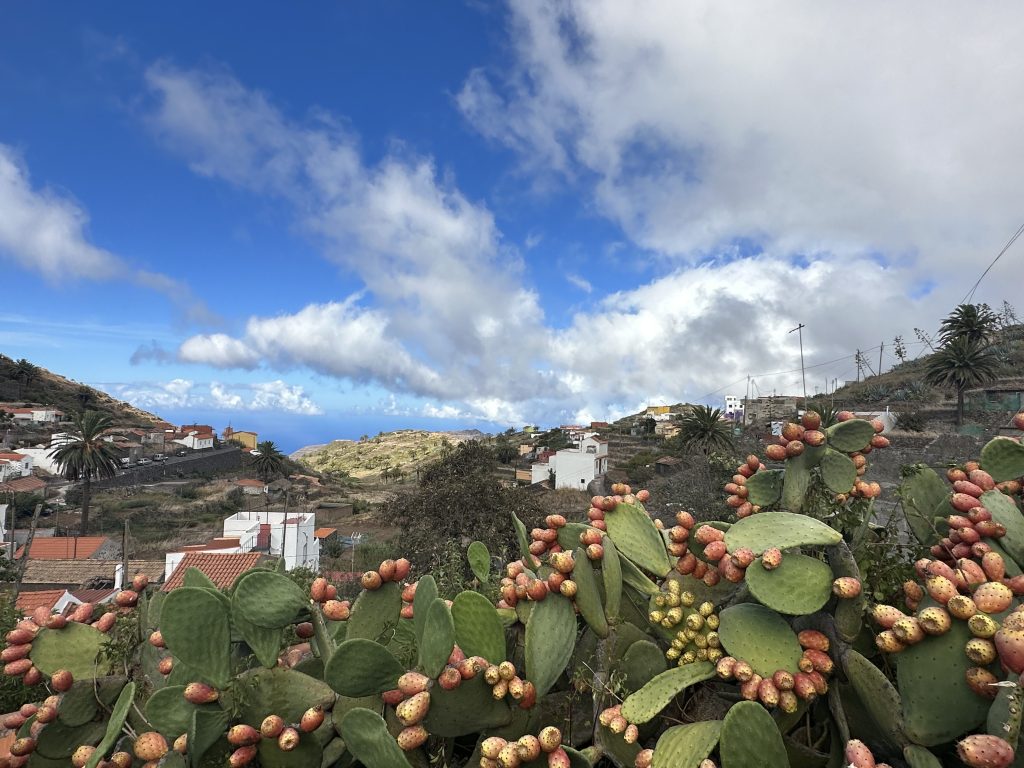
Mirador de la Curva del Queso
The landscape continued to change and amaze me as I made a stop at the Mirador de la Curva del Queso, which translates to the Mirador of the Curve of the Cheese.
This captivating viewpoint along the road to Playa la Calera, beside Barranco del Valle Gran Rey, showcases once again the incredible natural scenery — from its rugged terrain to winding roads and lush valleys.
I took a deep breath here to savour the view whilst enjoying a Canarian banana, although it has to be said I kind of wish it was a simple cheese sandwich. I mean, after all, I was on the Curve of the Cheese!


Casa de La Seda
My next destination was supposed to be the coast, but once again, the allure of the island and the enchanting Upper Valley captivated me at Casa de la Seda. The volcanic rock scenery began to transition once again into lush green vegetation.
This charming village offered breathtaking views of the mountains, stepped farm terraces, palm groves, vibrant-coloured houses, tropical plants, and the brilliant blue sea in the distance.
I couldn’t resist pausing for a photo, and once again savouring my surroundings.


Valle Gran Rey
Before my visit, I thought Valle Gran Rey was just another coastal town, but little did I know, that it’s actually made up of a patchwork of unique villages all of which offer the visitor something a little different. In its heyday, Valle Gran Rey was a Hippy haven in the ’70s and ’80s, attracting free spirits who embraced a laid-back life of peace, nature, and music.
La Playa boasts the renowned Playa del Ingles beach, where clothing is optional – so be prepared for unexpected sights! Before you ask, no I didn’t.
Little La Calera features a lovely beach backed by a promenade with charming eateries, hotels, and apartments.
La Puntilla, adorned with hotels and shops, embraces the lingering hippy style and hosts the rather fabulous Hautacuperche statue.
Borbalan is a mix of apartments, private accommodations, and citrus plantations.
Vueltas, the harbour, offers a tiny beach, Playa de Vueltas.
Valle Gran Rey attracts nature lovers, hikers, and those seeking a tranquil escape. Regular sunset beach parties with retro vibes, reminiscent of the ’70s and ’80s, still thrive. The longer I spent in Valle Gran Rey the more I enjoyed it… I guess deep down I have always been a free spirit and a traveller so it was no surprise it felt like home.
From Valle Del Rey, I retraced my steps beyond Arure before veering right, setting course for one of La Gomera’s iconic gems – the Garajonay National Park at the heart of this circular island.






Garajonay National Park
Exploring Garajonay National Park feels like tackling an island-sized puzzle – it spans a third of La Gomera, which is 24 km across!
The main roads are surprisingly good, but brace yourself for hairpin bends that might leave you holding your breath. Venture off the main routes, and you might encounter narrow, tree-lined roads that can get slippery, especially up high with the regular rain and clouds.
For those who want to head to the very top of La Gomera, park at Los Pajaritos or El Contadero and take a leisurely stroll up to Alto de Garajonay, the island’s crown at 1487 meters.
The park’s pièce de résistance is its diverse flora and fauna, dominated by ubiquitous laurel trees. Hikers are in for a treat with an array of circular and linear trails and I would recommend taking a map and getting a weather update at one of the information centres as mountain weather can change in a flash.
A worthwhile pitstop is at La Laguna Grande, where you can take refreshments and gather information on local trails and conditions. While trying to understand the rather odd wooden donkeys and climbing frames in the children’s area, I was treated to a Kestrel show – these birds are common across the island and this one was making strategic dives into the long grass, perhaps on the hunt for a frog or a rodent. This was nature’s own amusement park and far more entertaining than those donkeys!
Now it was during this stop that I finally got to experience an island tradition that I was waiting for. As I ordered a coffee in my rather appalling Spanish, the bartender and the kitchen staff in the next room started whistling to each other…. now I am not normally one to be suspicious, but I could not help but wonder if they were sharing a joke about my linguistic skills… I guess I will never know!

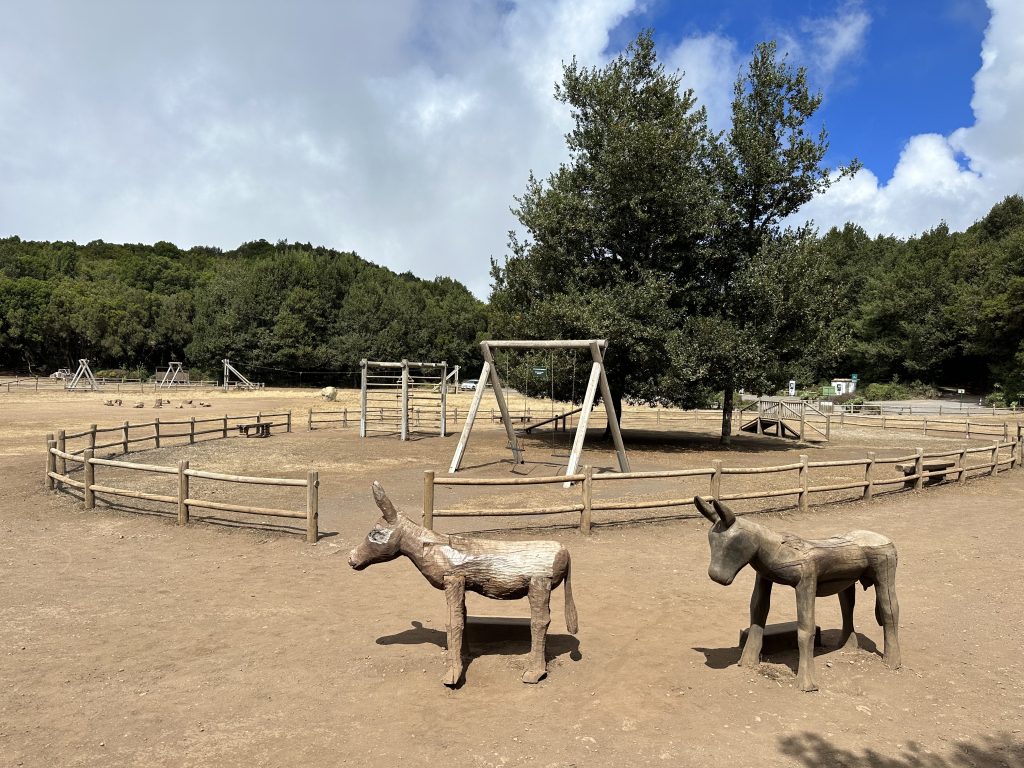
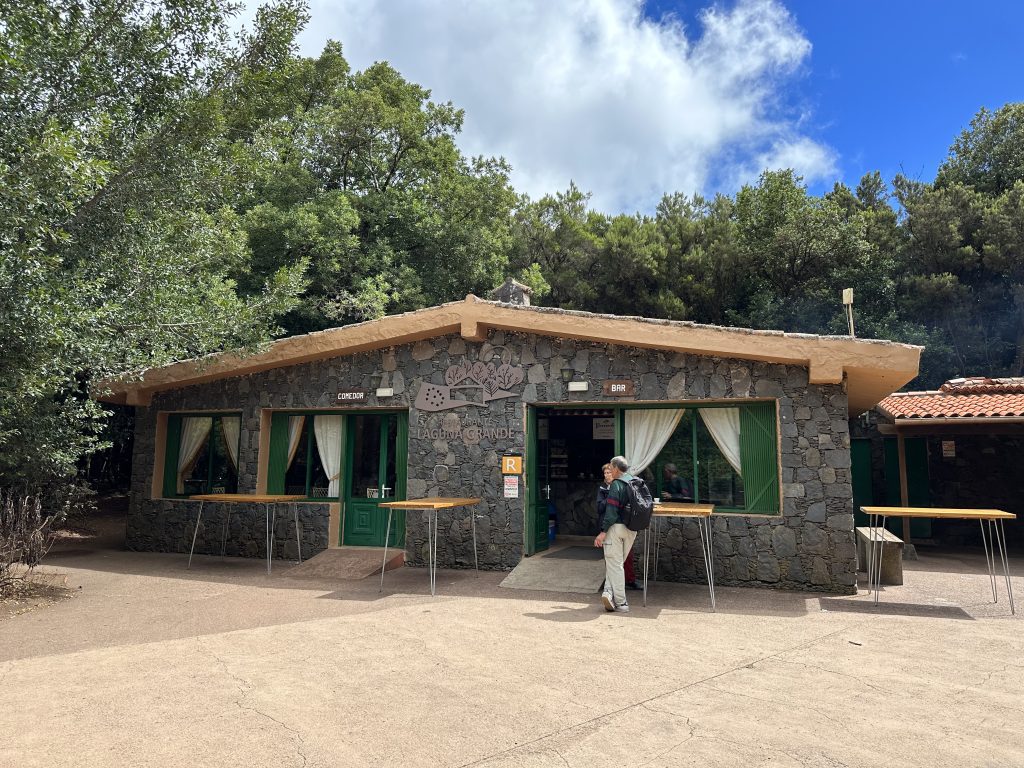
Mirador De Los Roques
From the heart of Garojonay National Park, it was time for me to head back to my hotel in the south. However, I knew my day of incredible scenery was not over as I had read about the Mirador de los Roches which I would pass on my route down.
Undoubtedly one of the island’s finest viewpoints, offering a panoramic display of three prominent rock formations: Roque Agando, Roque Ojila, and Roque La Zarzita. With clouds visibly drifting right over my head, I planned to return for another glimpse on a clearer day.
Alone in the mountainous terrain, surrounded by clouds, there was a magical quality to the place. Seated on the stone wall, I reflected on my day exploring the South, West, and Centre of La Gomera.
Could the upcoming exploration of the North possibly surpass today? Let’s find out!


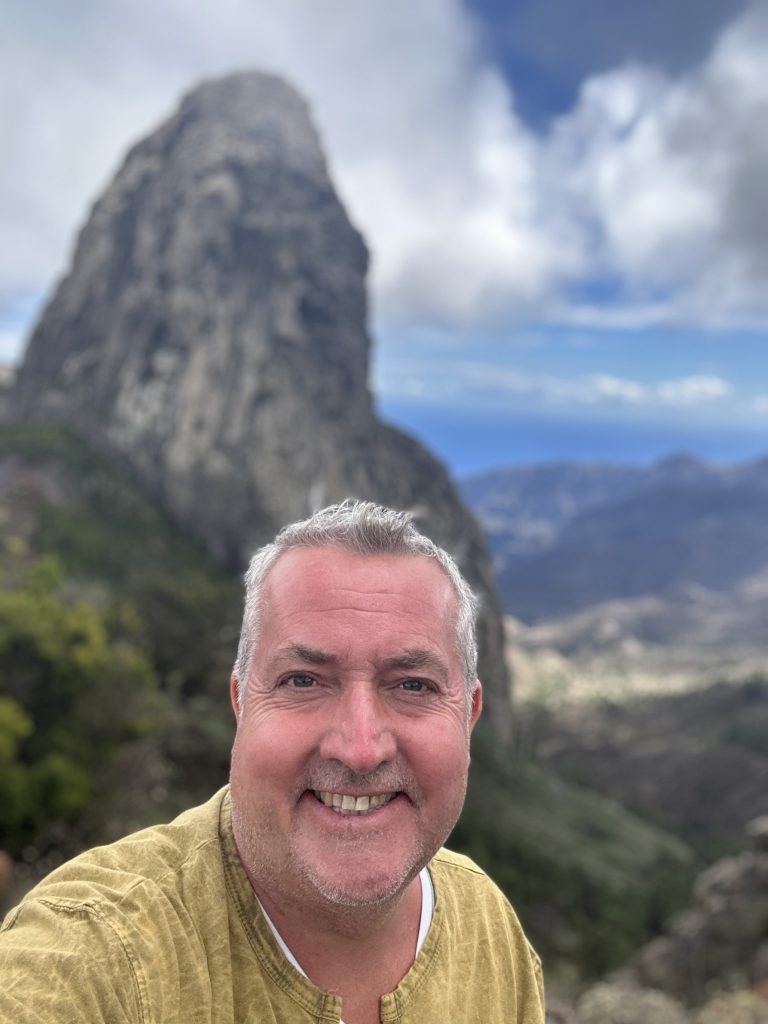
A Day Trip By Road To The North of La Gomera
With time precious I hate going back over old ground and so at breakfast, I considered my options. I love planning a road trip over breakfast. Few things thrill me more than preparing for an adventure, maybe that’s why I do what I do!
Today’s route led me along the El Cedro path to the Hermigua Valley, initially bypassing it. I was to continue through Agulo for an early stop at the iconic Mirador de Abrante. Next up was to be Vallehermoso in the Northwest, before circling back to Hermigua.
The weather was superb, well on the coast it was, so I decided to take the shortcut across the island. It made perfect sense but it did involve me going off-piste on one of those allegedly scary roads – the 6km long El Cedro route….
As the sun rose, I ascended into the mountains. Approaching the Mirador de Los Roques, there was rain, accompanied by swirling clouds. Faced with the choice of tackling the narrower El Cedro route, or reverting to the longer, familiar, safer route, I reminded myself it was just 6 km, it was early so no one was around and…. that life is for living.
This detour exposed me to those wet, slippery narrow mountain roads with minimal barriers. The silver lining, if you will, was the absence of cars or people, and the cloud cover obscured the cliff edges – basically, I could not see where I was going! Taking utmost caution, I navigated the route before rejoining the main road, passing through Hermigua and Agulo, and eventually tackling another narrow road leading to the renowned Mirador De Abrante.
Mirador De Abrante
I received a handy tip about travelling to the Mirador de Abrante: arrive early as navigating the 2km long road that approaches the Mirador when the many tour buses start arriving is not much fun!
The main reason people come here is for the iconic glass skywalk, which stands 625 metres above sea level. I was the first to arrive that day and met the only guy there, the manager who was washing the floor. He did not speak English, only German and Spanish – it’s strange but I always like that – why should the world speak English! He offered me a book on…. goats in German, which I politely declined. I am sure there was more to this book than goats but it did make me chuckle!
La Gomera’s weather greeted me with clouds, obstructing the skywalk’s panoramic views so I decided to take my time and explore a rather uninspiring information area. Outside the red iron oxide earth and sparse vegetation were far more of interest to me.
As groups of lively, not to mention noisy, Italians and Spaniards arrived, the weather changed, and slowly the magnificent Mount Teide in Tenerife came into view. I tentatively walked out onto the skywalk and enjoyed this truly wonderful experience which is FREE to visitors, unlike the book on goats.
About a kilometre from the skywalk is a popular restaurant where you can enjoy traditional Canarian dishes and at certain times, Silbo whistling demonstrations.


Mirador del Almendrillo
The rest of my day was visiting places where, let’s be honest I was not expecting a great deal but they turned out to be hidden gems.
En route to my next stop of Vallehermoso in the northwest of the island, I stopped off at the Mirador del Almendrillo. Whilst this yet again provided wonderful views it also introduced me to an animal I was hoping to find! The giant La Gomera Lizard.
There I was minding my own business eating yet another Canarian banana when I heard this rustling in the bushes below. I thought given the loud noise it may be a cat or a dog but upon peering over the railing it was a black lizard with a silver head measuring about 45 cm in length. I am like a child when I see any wildlife so I took a photo of him as he basked in the sunshine. It was then however that I decided to move on, just in case Mum or Dad arrived!



Vallehermoso
Arriving at Vallehermoso, parking proved to be a challenge but finally, I found a spot just behind the Plaza de la Constitución. This is the town’s central square where I got my bearings and enjoyed a coffee and a pastry at the rather lovely “Cafetería Lucía Cosas de Verdad”. I was even joined by the local cat who appeared to know everyone in the town – it’s that kind of place.
The pretty streets, Town Hall, the Iglesia de San Juan Bautista Church, the botanical gardens and its beautiful mountain backdrop made the town of Vallehermoso a pleasant surprise. I loved its authenticity…. this was yet more of the real La Gomera and I could have stayed on that terrace people, and cat, watching all day!
Just as a side note the nearby rock formation known as Roque Cano is very popular with experienced hikers. One trail that starts in Vallehermoso is 12km in length and is very popular. A word of warning though – it is not for the faint-hearted and will require ropes and equipment to conquer!



Mirador de la Punta
Next up I turned around and headed back towards the town of Agulo! En route, I stopped, just after exiting a tunnel so you must make a quick decision to pull over, at the Mirador de la Punta. Once again there were, as you can see here, lovely views across the Hermigua Valley to the sea and Tenerife in the distance.

Agulo
The pretty village of Agulo is located on a hill and is home to a central square, delightful cobbled streets and white houses with red-tiled roofs. All around are banana plantations which, as you have probably guessed, are a staple diet here in La Gomera.
Art lovers should take a trip to the Casa del Pintor José Aguiar, which is home to one of La Gomera’s, and Spain’s finest painters of the 20th century.
Passing through Agulo leads you to the coast and the Pescante de Hermigua.

Pescante de Hermigua
My last stop in La Gomera was one of the most surprising.
Just a handful of minutes east of Agulo is the Playa Hermigua beach which is known for being home to the Pescante de Hermigua. I parked on the beach and took a stroll.
The area is known for the pillar-like structures at the far end of the beach which were built at the end of the 19th and start of the 20th century. They were a docking system, known as a “Davit” for lowering exported agricultural produce into ships. I found them eerily calming and very much a nod to the island’s maritime history.
The beach here has large boulders and a very strong current so not a place to swim. There is also a natural pool bathing area – the Piscinas Naturais, but again, I would not recommend it.
The pretty little village is set back from the beach. In between are banana plantations with once again, my mate, the little Kestrel hovering overhead – I think he was following me!
I liked it here – it’s a little rough around the edges and a gritty kind of place. A couple of empty buildings on the beach with graffiti make you feel as if it’s stuck in time – I liked that as I was the only person on the beach marvelling at these industrial pillars which are backed by mountains and Mount Teide in the distance.
The Pescante de Hermigua were a fabulous end to yet another magical day of exploration!




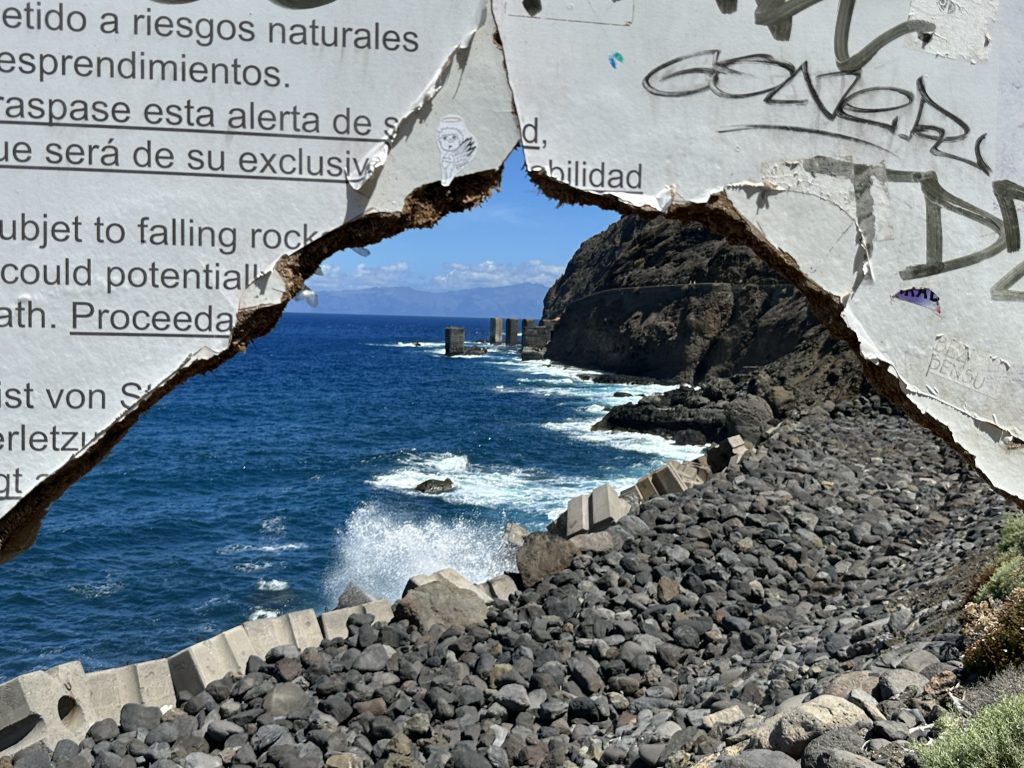

Summary
La Gomera was always on my bucket list even before bucket lists were invented however it took me 20 years to visit. I am so pleased I finally made it as I enjoyed my four days on the island more than I could ever have imagined.
The nature, the mountains, the calm, the whistling locals and the cuisine are just a few factors but above all, it was the authenticity of this island that has not been ruined by commercialism or greed. It’s a special place, so if you go, just make sure you keep it that way!
This blog covers the island but another ingredient as to why I enjoyed my stay so much was my hotel and for that, you will need to visit my blog about the wonderful Hotel Jardin Tecina and Tecina Golf.
More Information
For more information, visit the La Gomera Tourist Office website or contact your local travel agent or tour operator.












